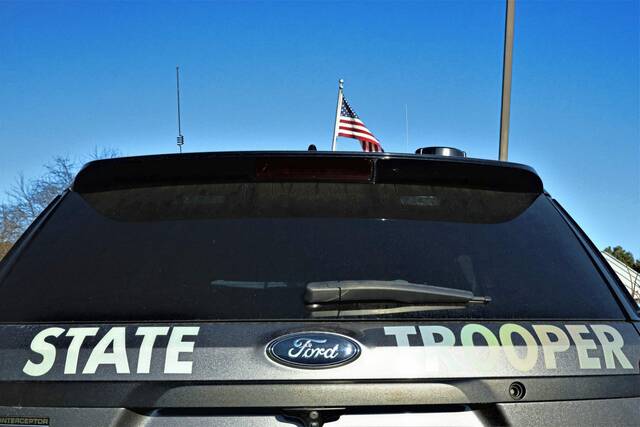Allegheny County officials contend that several large chain drug stores had a hand in creating the deadly opioid epidemic that has killed thousands across the county, contending that the pharmacies pushed the potent painkilling opioids into communities and failed to monitor and restrict sales when red flags arose.
In a lawsuit filed Friday in the Allegheny County Common Pleas Court, county officials called a years-long string of overdose deaths “the worst man-made epidemic in modern medical history.”
Naming Rite Aid, CVS and Walgreens as defendants, the lawsuit alleges “an epidemic of addiction, overdose and death caused by defendants’ flooding the United States, including (Allegheny County), with prescription opioids.”
Representatives for Rite Aid, CVS and Walgreens could not immediately be reached for comment.
The pharmacies, according to the lawsuit, had the duty to put in place systems to identify suspicious orders, maintain controls against drugs being diverted for illegal use and stop suspicious orders when red flags appeared.
“Instead (the pharmacies) actively contributed to the oversupply of such drugs and fueled an illegal secondary market,” the lawsuit reads.
Since 2008, there have been about 6,200 drug overdose deaths in Allegheny County, data shows. Fentanyl was found in more than 52% of cases, and heroin was identified in about 45% of toxicology reports.
Prescription opioids were present in just over 21% of cases.
The lawsuit ties the pharmacies to the overdose deaths driven by non-prescription opioids such as heroin: Unable to get more prescriptions or in need of stronger drugs, users “have turned to heroin, fentanyl and other illicit drugs.”
The American Society of Addiction Medicine estimated that 80% of people who began using heroin in the past decade started with prescription painkillers.
According to the lawsuit, the chain pharmacies had a duty to act on red flags raised by the extensive information they had on the opioids they distributed and dispensed. The pharmacies “had direct knowledge of patterns and instances of improper distribution, prescribing, sale, and use of prescription opioids.”
All three, the lawsuit alleges, had inadequate systems to monitor the distribution of such drugs, and pharmacists were encouraged to fill prescriptions as quickly as possible, leaving little time to identify red flags or suspicious behavior.
A 2011 PowerPoint presentation to Rite Aid district managers told them that “Driving Top-line prescription sales through aggressive prescription growth — this is YOUR NUMBER 1 JOB!” according to the lawsuit.
The chain pharmacy operates 150 locations in Allegheny County, including Thrift Drug and Eckerd. From 2006 to 2014, the company distributed more than 58 million doses of hydrocodone and oxycodone to those pharmacies.
CVS, meanwhile, distributed more than 35 million dosage units of just hydrocodone to its 27 Allegheny County pharmacies from 2006 to 2014, according to the lawsuit.
And Walgreens distributed 8.4 million dosage units of hydrocodone and 6.1 million doses of oxycodone to its 17 Allegheny County pharmacies, including one Pittsburgh pharmacy that bought more than 2.1 million units in that time, according to the lawsuit.
The lawsuit contends that the pharmacies knowingly created a public nuisance and engaged in unfair trade practices. The county also alleges negligence and gross negligence on the part of the pharmacies.
Related:
• Opioid crisis rages alongside covid pandemic in Pa.• Inside one woman's near-fatal overdose, struggle with addiction
• As opioid crisis creates orphans, grandparents take on parenthood again, often with few resources
A similar lawsuit decided late last year in Ohio sided with the plaintiffs, ruling that pharmacies operated by CVS, Walgreens and Walmart should have stopped the flood of pills that led to addiction and death in Lake and Trumbull counties. Two other chains — Rite Aid and Giant Eagle — settled with the counties.
Using the public nuisance claims, the counties were able to make their case to a jury that the pharmacies helped create and drive the epidemic through their dispensing practices, according to NBC.
A trial in West Virginia, however, went the opposite direction.
Filed by the city of Huntington and Cabell County, the lawsuit, which leveled similar claims against drug distributors McKesson, AmerisourceBergen and Cardinal Health, went in favor of the distributors.
The city and county governments had elected to go to trial rather than settle, seeking $2.5 billion from the distributors, who they said flooded their communities with pills.
A judge disagreed, ruling this week that the companies themselves did not cause the oversupply of opioids, but rather doctors’ “good faith” prescribing methods drove up the volume shipped to pharmacies, according to Reuters.
“The opioid crisis has taken a considerable toll on the citizens of Cabell County and the city of Huntington,” the judge wrote. “And while there is a natural tendency to assign blame in such cases, they must be decided not based on sympathy, but on the facts and the law.”








